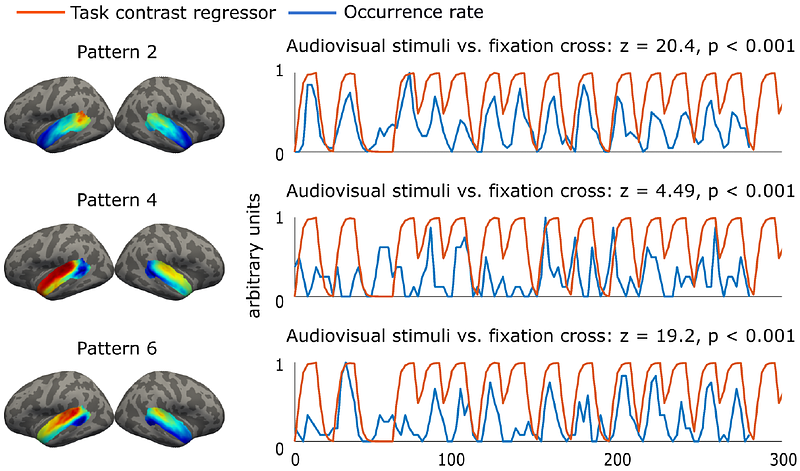Function of the auditory cortex characterized by its intrinsic dynamic coactivation patterns estimated in individuals

Function of the auditory cortex characterized by its intrinsic dynamic coactivation patterns estimated in individuals
Hakonen, M.; Lankinen, K.; Kotlarz, P.; Polimeni, J. R.; Turpin, T.; Ren, J.; Wang, D.; Liu, H.; Ahveninen, J.
AbstractDetermining the functional organization of the auditory cortex (AC) has been difficult with conventional task-based approaches due to the broad responsiveness of auditory subregions to various acoustic properties. Moreover, most studies have investigated functional organization of AC with static methods, although brain has shown to be organized into dynamic networks. Here, we investigated dynamically varying coactivation patterns of the local networks in the auditory cortex (AC) determined from 7T fMRI data with a novel individualized network-based algorithm. An eight-pattern solution was selected for closer examination based on its high reproducibility of the occurrence rates (r=0.86) and the spatial topography (r=0.79) between sessions. Dynamic AC patterns successfully captured interindividual variability, as indicated by significantly higher variability between than within individuals for the AC pattern occurrence rates and spatial topographies. The coactivation patterns shared similarities between resting-state and auditory-task data, as indicated by the group-level similarity of 0.84 and individual-level similarity of 0.71 in the spatial topographies. Furthermore, the occurrence rates of AC patterns identified in the task data, using pattern templates derived from resting-state data, correlated with specific task contrast regressors. Our results indicate that the AC function can be characterized by a set of dynamically varying coactivation patterns that are consistently observed during resting state and auditory stimulation, and that get synchronized with auditory input. These findings enhance our understanding of the relationship between spontaneous and stimulus-driven activity in the AC and support the development of more time-efficient paradigms for studying its functional organization.